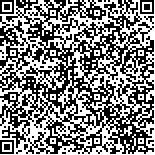本文已被:浏览 571次 下载 326次
投稿时间:2020-07-04 网络发布日期:2021-03-20
投稿时间:2020-07-04 网络发布日期:2021-03-20
中文摘要: 目的 拟探讨基于深度学习技术的乳腺X线智能检测系统在临床触诊阴性乳腺肿瘤诊断中的应用价值。方法 回顾性收集2014年1月至2016年12月期间就诊于陕西省肿瘤医院的临床触诊阴性乳腺肿瘤患者322例,均手术治疗且临床病理资料齐全。使用MammoWorksTM乳腺智能检测系统对所有入组患者乳腺X线图片进行分析,以术后病理结果为金标准,分析在临床触诊阴性乳腺肿瘤中该检测系统算法更新前后的灵敏度、阳性预测值及每幅图假阳性标记数,以及临床病理特征对其检测效能的影响,并对比不同版本的检测效能差异。结果 不同版本MammoWorksTM(前期版本号:3.5.2.6;更新后版本号:3.5.4.43)在临床触诊阴性乳腺肿瘤中的诊断灵敏度分别为78.57%(253/322)、95.65%(308/322),阳性预测值(以标记数计算)分别为55.32%(801/1 448)、44.27%(1 120/2 530),每幅图假阳性标记数分别为0.50(0.25,0.75)、1.00(0.75,1.50);系统经过深度学习,算法得以更新,其检测灵敏度升高(χ2=35.926,P<0.001),阳性预测值降低(χ2=45.02,P<0.001),每幅图假阳性标记较前期版本有所增加(Z=-14.105,P<0.001)。两个版本的检测效能一致性较差(kappa=0.234)。在不同乳腺密度、病灶类型分组中前期版本系统检测灵敏度差异有统计学意义(χ2=12.198,16.235;P<0.05);系统更新之后消除了在不同临床病理特征分组中灵敏度的差异,组间差异均无统计学意义(P>0.05)。结论 MammoWorksTM系统通过算法更新,其检测灵敏度较前提高,在临床触诊阴性乳腺癌诊断中具有一定应用价值;但因其每幅图假阳性标记较多,仍需进一步优化,提高检测效能。
Abstract:Objective To investigate the application value of breast X-ray intelligent detection system based on deep learning technology in clinical palpation negative breast tumor diagnosis. Methods A total of 322 patients with palpation negative breast cancer in Shaanxi cancer hospital from January 2014 to December 2016 were retrospectively collected.MammoWorksTM breast intelligent detection system was used to analyze the mammograms of all patients.The sensitivity,positive predictive value,the number of false positive markers in each image and the influence of clinicopathological characteristics on the detection efficiency of MammoWorksTM breast intelligent detection system before and after the algorithm update were analyzed,and the effects of different versions of MammoWorksTM breast intelligent detection system were compared. Results The diagnostic sensitivity of different versions of MammoWorksTM (previous version:3.5.2.6; updated version:3.5.4.43) in clinical palpation negative breast tumors were 78.57% (253/322) and 95.65% (308/322),respectively.The positive predictive value (calculated by the number of markers) were 55.32% (801/1 448) and 44.27% (1 120/2 530),respectively.The number of false-positive markers in each image were 0.50 (0.25,0.75) and 1.50 (0.25,0.75),1.00 (0.75,1.50),respectively.After deep learning,the algorithm was updated,the detection sensitivity increased (χ2=35.926,P<0.001),the positive predictive value decreased (χ2=45.02,P<0.001),and the false-positive markers in each image increased compared with the previous version (Z=-14.105,P<0.001).The consistency of the two versions was poor (kappa=0.234).In different breast density and lesion type groups,the sensitivity of the early version of the system was significantly different (χ2=12.198,P<0.05;χ2=16.235,P<0.05).After the system update,the sensitivity difference in different clinicopathological characteristics was eliminated,and there was no significant difference between the groups (P>0.05). Conclusion The detection sensitivity of MammoWorksTM system is higher than before through algorithm updating,which has certain application value in clinical palpation negative breast cancer diagnosis.However,due to more false-positive markers in each image,it still needs to be further optimized to improve the detection efficiency.
文章编号: 中图分类号: 文献标志码:A
基金项目:陕西省科技计划项目(2018SF-233)
引用文本:
宋张骏,王虎霞,赵静,等.基于深度学习技术的乳腺智能检测系统在触诊阴性乳腺肿瘤诊断中的应用[J].中国临床研究,2021,34(3):323-328.
宋张骏,王虎霞,赵静,等.基于深度学习技术的乳腺智能检测系统在触诊阴性乳腺肿瘤诊断中的应用[J].中国临床研究,2021,34(3):323-328.
